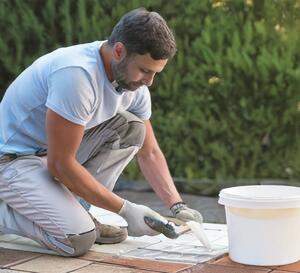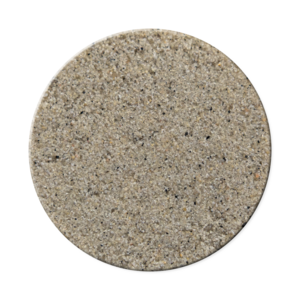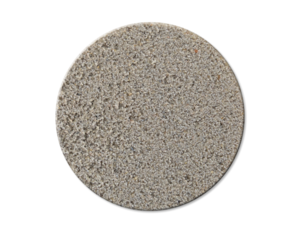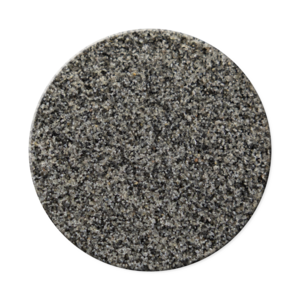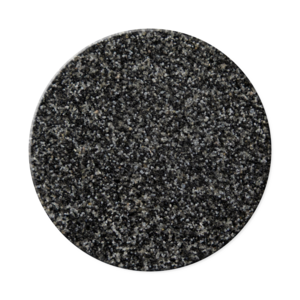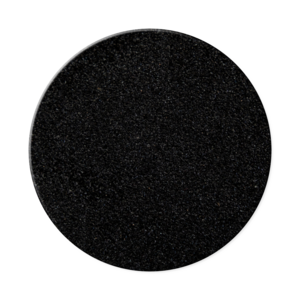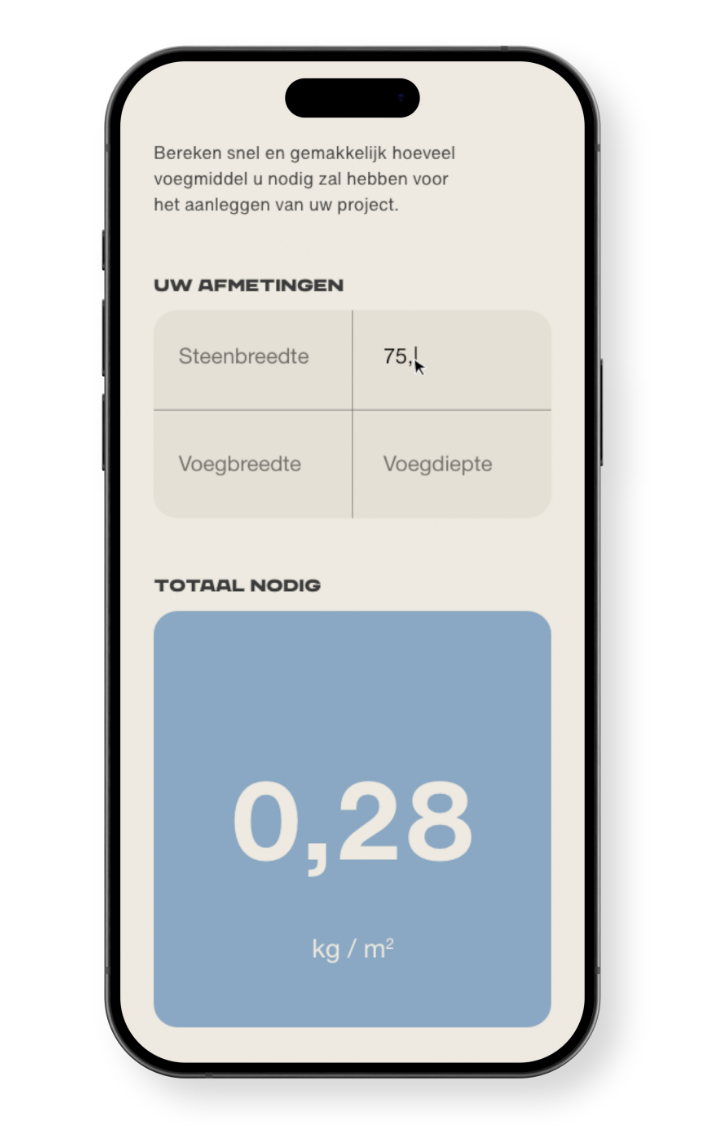All Weather Easy
- Easy to sweep in with a broom or squeegee
- Can be applied on wet surfaces – requires 12 hours of dry weather after application
- For joint widths from 2 to 20 mm
- Hardens on contact with air
- Walkable after 24 hours – fully cured after 7 days
- Available in 5 trendy colours
- Withstands loads up to 3,500 kg (DRIVE version)
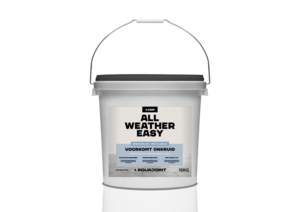
Available in a variety of colors
Important: A water-permeable joint will only be long-lasting if the base layer underneath is also sufficiently permeable or well-drained. Always ensure a slope of at least 2% so excess water can flow away easily.
How do I know if my base layer is sufficiently water-permeable?
Info
Preparation
Allow for a rain-free period of at least 12 hours after application, with an ambient and ground temperature between 3°C and 30°C.
Start with a stable, water-permeable base that can withstand the expected traffic load. Ensure the joints are at least 20 mm deep (or 30 mm in the case of pavers and setts thicker than 20 mm), have a width between 2 and 20 mm, and are clean and free of debris.
Then thoroughly soak the paving to prevent staining.
Application
Open the bucket and spread the grout in small portions over the surface to be jointed.
Important: always make a test area first!
Distribute the grout evenly and sweep it into the joints using a squeegee or broom, together with sufficient water. Work diagonally to remove any excess material and rinse the surface with a wide but gentle stream of water.
Points of Attention
When used in combination with limestones (e.g. travertine), it is strongly recommended to keep the tiles thoroughly wet and to avoid letting the jointing compound soak into the surface, as this may cause discolouration.
After application, rinse the paving thoroughly to prevent staining.
AquaJoint All Weather EASY is a natural product; as a result, slight colour variations may occur. For a consistent finish, use buckets from the same pallet.
Drying time
In warm and dry conditions, the joint sets after 18 hours and fully hardens within 24–36 hours. In cold or wet conditions, curing will take longer. Full load-bearing strength is reached after 7 days at a temperature of 20°C and 65% relative humidity.
Maintenance
Due to its water-permeable structure, the material is slightly porous, which may lead to moss or green deposits forming during winter. These can be easily removed in spring using a scrubbing brush and a suitable outdoor cleaning product, preferably chlorine-free.
If using a pressure washer, never direct the jet straight onto the joints. This may damage the top layer and unnecessarily deepen the joint.
Storage & Shelf Life
The jointing compound is vacuum-sealed in 15 kg buckets and has a shelf life of 2 years when stored in a dry and frost-free environment.
Leftover product can be stored by placing it back into the bucket and covering it with at least 5 cm of water. This will keep the product usable for several months.
Safety Instructions
Keep this product out of reach of children. Always wear protective gloves and appropriate clothing during use. Avoid contact with skin and eyes. In case of contact, rinse immediately with plenty of water and consult a doctor. This product may cause skin irritation, so handle with care.
Technical data
FAQ
How do I know if my base layer is sufficiently water-permeable?
The water permeability of your base largely depends on the soil type. On sandy soil, rainwater infiltrates easily. On clay or loamy soil, that’s not the case, and you’ll always need to provide additional drainage — for example with drainage pipes or a drainage mat. Without proper water evacuation, moisture can accumulate beneath the paving, leading to issues such as efflorescence or even cracks caused by frost.
Also pay attention to the composition of the base layer: if the cement content is too high, it becomes impermeable, which can worsen moisture problems. For patios, a ratio of around 80 kg of cement per m³ is sufficient, and for driveways 150 kg per m³. Using more is unnecessary and even counterproductive.
A better alternative is a fully water-permeable substructure made of washed crushed natural stone (such as porphyry) with a grain size of 2/6 mm, optionally finished with a fine top layer of 1/3 mm, as long as the proportion of fine particles remains limited.
Even when using water-permeable jointing products, a proper slope (at least 2%) and drainage remain essential for a well-functioning system. In case of doubt, a soil test or advice from a professional is recommended.
Can I use AquaJoint products when renovating an existing patio or driveway?
Yes, absolutely. However, to ensure a durable result, it is essential to thoroughly clean out the existing joints: at least 20 mm deep for tiles, and 30 mm for pavers or setts.
Without this preparation, we cannot guarantee that the joints will last for 10 years. Other conditions must also be met, such as a water-permeable base and suitable weather conditions.
My hands feel sticky after using AquaJoint products. Is that harmful?
No, AquaJoint products are not harmful to the skin. Due to the binder, they may stick slightly to your hands. If water and soap aren’t enough, you can clean your hands with alcohol. If you have sensitive skin, we recommend wearing work gloves during use.
Can I use AquaJoint to joint bluestone or travertine?
Yes, you can — but with All Weather Easy, extra care is needed to prevent staining.
- Thoroughly wet the tiles beforehand
- Work quickly in small sections to prevent the product from soaking in
- Keep the surface continuously wet during application
- Clean off immediately after the joint is finished
Can I use these products around a swimming pool?
For pools containing chlorine, we do not recommend using All Weather Easy around the pool. Frequent contact with chlorine may, over time, damage the joint and cause it to wear down.
